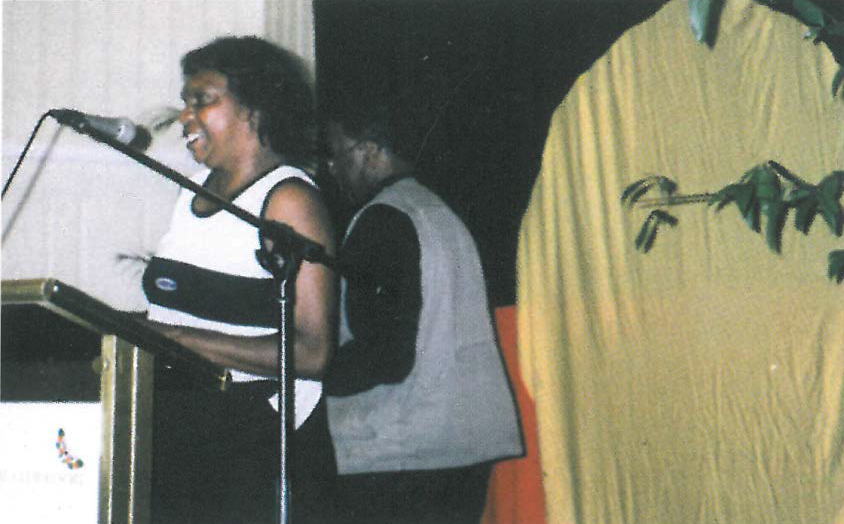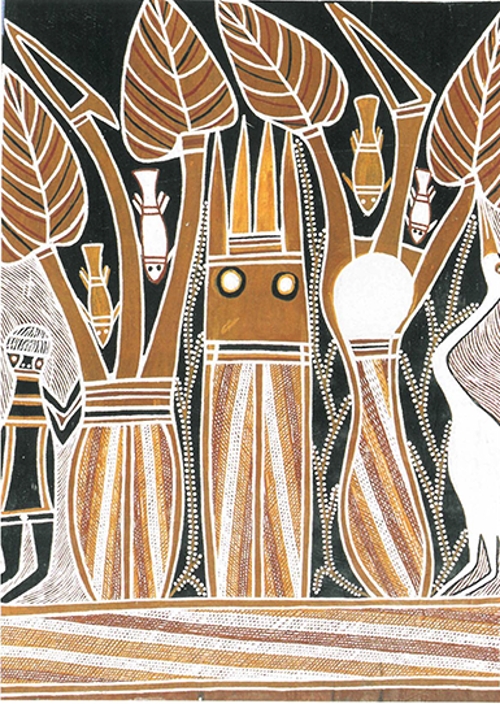
Within a ferment of media hyped debate around Aboriginal cultural issues, sales of Aboriginal art and craft continue to boom nationally and internationally. This phenomenon has been the subject of much analysis and study and the catalyst for many reports and scandals, aspirations for Aboriginal self determination, acts of ruthless self interest, cultural commodification and abuses of copyright, and has precipitated some of the most interesting debates over matters of principle being discussed in Australia today. These include concepts of cultural authenticity, faking, appropriation and intellectual property rights, the traditional and contemporary, human and land rights.
In the midst of this ferment, the first two publications of The Art and Craft Centre Story have appeared in the projected series of four.[1] These long and eagerly awaited analytical reports focus on 39 of the estimated 43 government supported Aboriginal art and craft centres in remote Australia. These centres are the backbone of production and distribution of works by Aboriginal artists living in communities for whom the skills development, employment, income and affirmation provide an important means towards achieving confidence, self esteem and self determination. It is indeed one of the few apparent means for these communities to achieve the dual purposes of social/cultural and economic development, and the degrees of confluence and divergence of these two ideals provide ideological challenges for the centres' managers.
The stated purpose of the project was not only to gather and analyse information, but also to "raise the consciousness of art centre governing bodies and staff about the ways in which they determine and carry out their roles."
The work for these reports was coordinated by Felicity Wright and commissioned by Desart, a regional indigenous arts resource advocacy body. Volume I exhaustively covers findings based on detailed questionnaires, while for those who want the shorter answer, Volume II provides an executive summary with key recommendations and an important economic analysis by Professor Jon Altman, Centre for Economic Policy Research, Australian National University. Two other reports are due out in mid 2000: Towards Benchmarking which will offer examples of best practice as a reference guide for art centre management and staff and Dollars and Sense discussing the commercial and non-commercial sectors of the industry.
These first two studies have used as their springboard, the respected Review of the Aboriginal Arts and Crafts Industry Report produced by Altman in 1989. Since then much has changed particularly in relation to government policy, funding responsibility and information technology, an Aboriginal Art Traders Association has been formed with a code of ethics and the Labels of Authenticity have been launched by the National Indigenous Art Advocacy Association. However, conditions are still very far from perfect and the process adopted for this project has aimed to be exemplary in making policy and resource allocation recommendations based on rigorous and informed research. Unfortunately it has been hampered by the lack of availability of comprehensive historical economic data required to undertake the trend analysis so vital in informing policy development.
Of the mass of recommendations made, one overridingly stands out: the necessity for the establishment of a centralised discrete arts policy and program administration unit. This unit could then house the position of Human Resources Officer which is one of the major recommendations of the report. Along with the development of a best practice manual, this would raise the stakes in administrative standards in relation to staff recruitment, record keeping, conservation, documentation, archiving, storage, collaborative information exchange, networking etc. The report makes it obvious that there is also an urgent need for at least two other positions, one focused on improving standards of organisational governance and the other to ensure effective financial management and the co-ordination of promotion and marketing of art product across all the centres . The staff of the centres work under often appalling conditions and struggle with overwhelming competing demands, expected to be all round experts in everything. Some overall co-ordinated assistance would achieve much needed efficiencies within economies of scale.
Many in the arts sector would argue that the recent Nugent Inquiry into the Major Performing Arts Organisations has paved the way for equally serious analysis to be undertaken right across the whole arts sector. This four volume report deserves to be regarded with at least the same seriousness as Nugent, clearly demonstrating the need for increased government attention and assistance to the Indigenous visual arts and craft sector. Otherwise there will be an obvious discrepancy between the treatment of the 'flagship' performing arts companies and all other enterprises in the arts sector.
Footnotes
- ^ These reports will dovetail with research being undertaken by the National Association for the Visual Arts (NAVA) to produce the Visual Arts and Crafts Indigenous Protocols Kit due out later this year (funded by ATSIC and the Australia Council).












